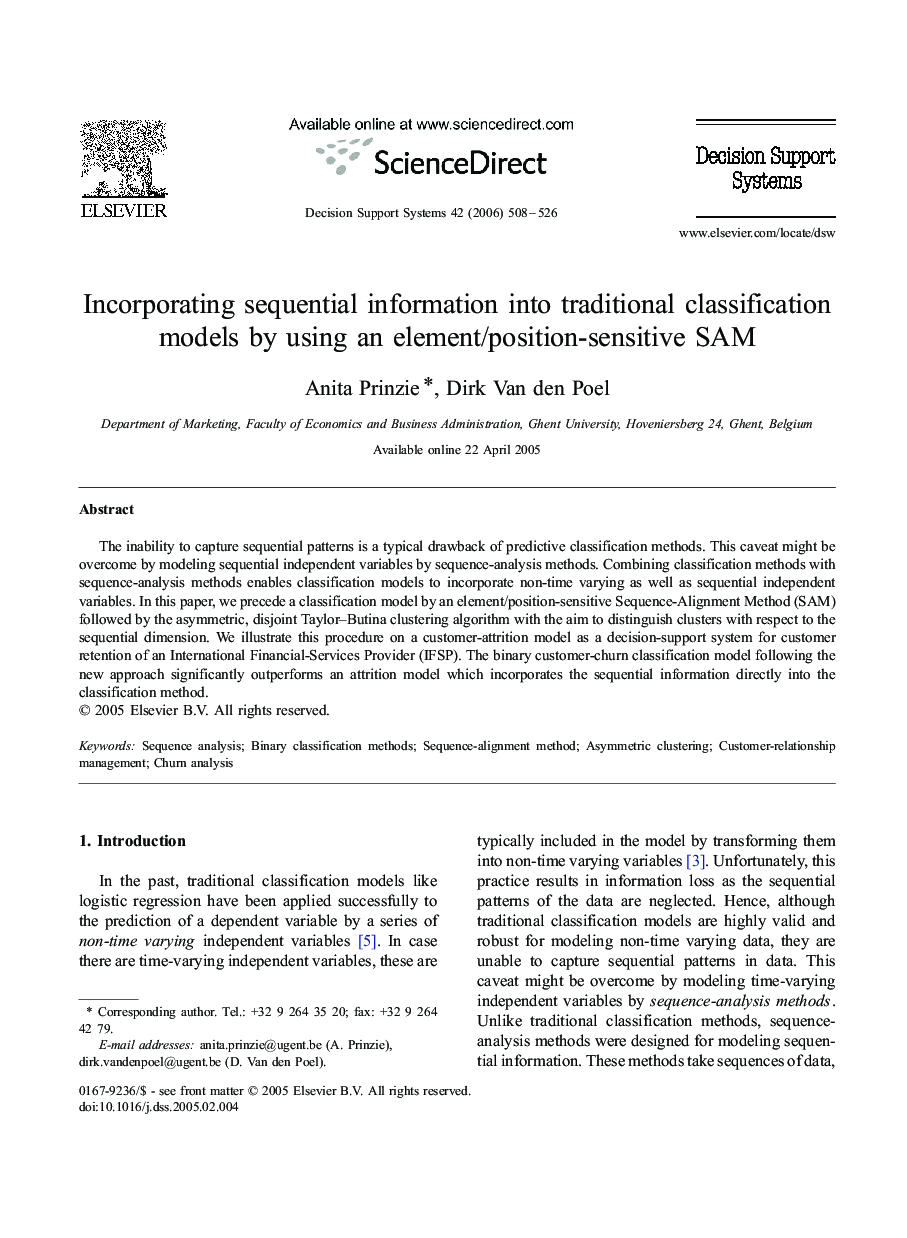| Article ID | Journal | Published Year | Pages | File Type |
|---|---|---|---|---|
| 553363 | Decision Support Systems | 2006 | 19 Pages |
The inability to capture sequential patterns is a typical drawback of predictive classification methods. This caveat might be overcome by modeling sequential independent variables by sequence-analysis methods. Combining classification methods with sequence-analysis methods enables classification models to incorporate non-time varying as well as sequential independent variables. In this paper, we precede a classification model by an element/position-sensitive Sequence-Alignment Method (SAM) followed by the asymmetric, disjoint Taylor–Butina clustering algorithm with the aim to distinguish clusters with respect to the sequential dimension. We illustrate this procedure on a customer-attrition model as a decision-support system for customer retention of an International Financial-Services Provider (IFSP). The binary customer-churn classification model following the new approach significantly outperforms an attrition model which incorporates the sequential information directly into the classification method.
